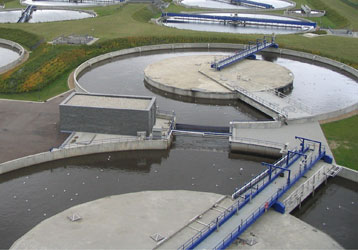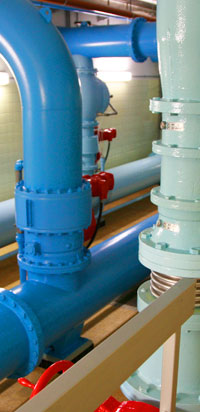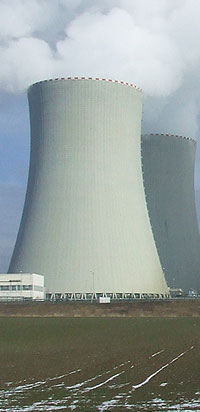
 Municipal waste water systems that also treat storm runoff — most common in the Northeast and Great Lakes region — are notorious for overflowing into nearby lakes and rivers.
Municipal waste water systems that also treat storm runoff — most common in the Northeast and Great Lakes region — are notorious for overflowing into nearby lakes and rivers.
EPA mandates and upgrade schedules are leading some cities to consider greener, simpler alternatives to expensive infrastructure upgrades to reduce water pollution.
In the Great Lakes basin, officials claim that combined sewer overflows are a thing of the past. While there is less pollution now than before the Clean Water Act, most people would be stunned to learn how much raw sewage still spills into area rivers and streams. Sewage treatment is so enormously expensive it takes decades to implement. For example, in 1986, the EPA filed suit against the city of Toledo over this pollution, leading to a 1998 consent decree requiring the city to virtually end sewage spills and double capacity of the its treatment systems, a $521 million project. Construction has now been extended to 2020 to soften the blow on ratepayers. So it may finally get done 34 years later — unless there are more delays.
I wonder … to what degree sewage treatment managers are planning for climate change, which is expected to bring more violent weather and thunderstorms to the Midwest. Such events would require increasing capacity. Has that been factored into planning? Are officials anticipating more public health issues?
Notable quote: "The day has come to stop treating the Ottawa River like Toledo's toilet," said Toledo City Councilwoman Lindsay Webb.
Read more about this topic
- Controlling Sewage Is Critical to Great Lakes' Health [By Tom Henry, Toledo Blade]
- Local State Park Braces for Summer Water Woes [By Tom Henry, Toledo Blade]
- Toledo Sewage Spills Persist as Residents' Bills Increase [By Tom Henry, Toledo Blade]
- Funding Faces Rough Waters in Congress [By Tom Henry, Toledo Blade]
The EPA is cracking down on large municipalities to conform to the Clean Water Act and reduce sewage overflows by upgrading collection and processing systems. It's a monumental and expensive undertaking with bold deadlines for improvement at a time when many cities are approaching bankruptcy.
Going forward: Now that the EPA has officially approved Philadelphia's $2 billion proposal to absorb the first inch of storm water with green infrastructure, more municipalities will be considering this approach. It's less expensive than capacity building, and it has other benefits: additional parks and trees, car-free commuting, spruced up neighborhoods, green jobs.
Notable quote: “Our goal is to turn over … about one third of the total drainage area into green acreage. In addition, we want to restore almost 20 miles of urban stream corridor. From the use of pervious pavement, green roof technology, rain barrels, storm water tree trenches, to [vegetated] bump-out curb extensions and rain gardens, our goal is to keep storm water out of our combined sewer system instead of trying to just enlarge the system.” — Philadelphia Mayor Michael A. Nutter
Read more about this topic
| Tweet This Page |










